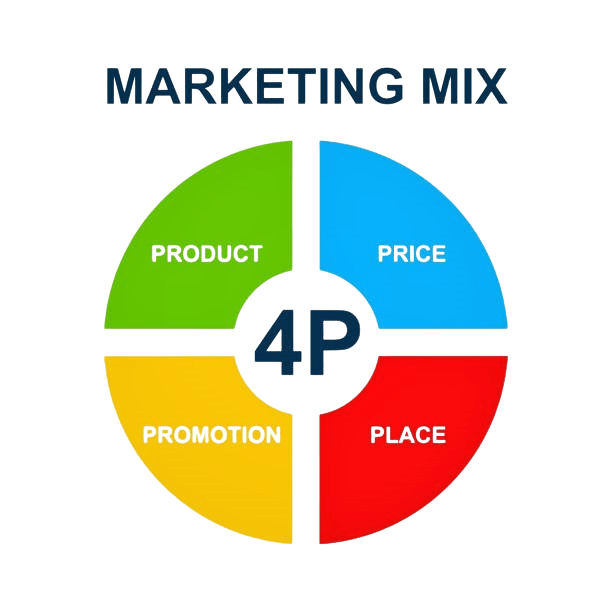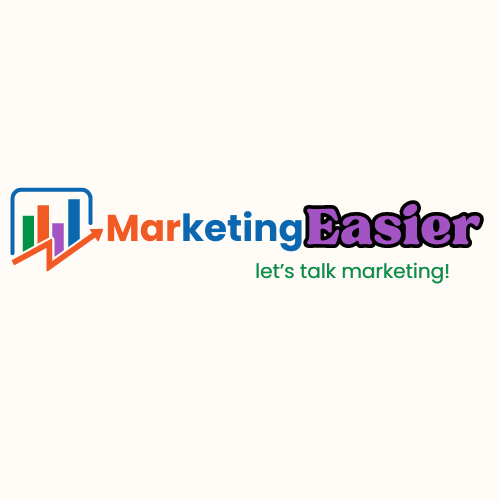
The marketing mix, often referred to as 4 Ps of marketing (product, price, place and promote). It involves creating and delivering value to your customers, as well as building and maintaining long-term relationships with them.
Table of Contents
ToggleBut how you design and execute a marketing strategy that works for your business? That’s where marketing mix comes in.
Why it is important for businesses?
The 4 Ps of marketing mix is a framework that helps you plan and implement your marketing activities. It consists of four Ps: product, price, place and promotion. These are the variables that can control and adjust to meet the needs and preferences of your target market.
Marketing plays a key role in the company’s strategic planning by providing inputs regarding attractive market opportunities. Marketers alone cannot produce superior value for customers.
A company’s success depends on how well each department (finance accounting, operations purchasing and human resources) performs its customer value-adding activities and how well departments work together to serve the customer.
How to use marketing mix for business?
The product is the good or service that you offer to your customers. It should satisfy their needs and wants, as well as provide them with unique features and benefits.
The price is the amount that your customers pay for your product. It should reflect the value and quality of your product, as well as your costs, objectives, and competition.
The place is the location and distribution channels where your customers can access your product. It should be convenient and accessible for your customers, as well as cost-effective and efficient.
The promotion is the communication and advertising activities that you use to inform and persuade your customers to buy your product. It should be consistent, creative, and relevant to your product, price, place, and target audience.
The marketing mix is not a one-size-fits-all solution. It depends on various factors, such as your industry, sector, market, customer, and competitor. You need to research and analyze your situation, and then tailor your marketing mix accordingly. By doing so, you can optimize your marketing performance and achieve your business goals.
For instance, Apple is known for its innovative and high-quality products, such as the iPhone, iPad, Mac, and Apple Watch.
It charges premium prices for its products, which reflect its brand image and customer loyalty. It sells its products through its own online and physical stores, as well as authorized resellers and distributors.
It promotes its products through various channels, such as TV, social media, websites, and events. Apple’s marketing mix helps to create a strong and distinctive brand identity, and maintain its competitive edge in the technology industry.
In the following sections, we will explore each of the four Ps of the marketing mix in more detail, and provide you with some tips and recommendations on how to apply them in practice.
4 Ps of Marketing Mix
Product
The marketing mix starts with product or service. The product is the good or service that satisfies the customer’s needs and wants. To identify the unique features and benefits of the product, marketers need to conduct market research, analyze customer feedback, and evaluate the competitive landscape.
Today customers need solutions to their problems. They need products or services that ultimately solve their needs and wants.
Marketers keep watch the product life cycle is the stages that a product goes through from introduction to decline. Marketers need to adapt their product strategies according to the product life cycle stage, such as innovating, differentiating, extending, or withdrawing the product.
An example of a product with unique features and benefits, a long product life cycle, and a strong branding strategy is Coca-Cola, the world’s most popular soft drink.
To design winning marketing strategy and improve your products or services, you need to consider the following key aspects:
Variety: This refers to the number and types of products or services that you offer within a product category. You should offer a variety of products or services that cater to different customer segments, preferences, and occasions.
For example, Coca-Cola offers a variety of products within the soft drink category, such as regular Coke, Diet Coke, Coke Zero, Coke Life, and flavored Coke.
Quality: This refers to the level of performance and reliability that your products or services deliver to your customers. You should ensure that your products or services meet or exceed your customers’ expectations and standards.
An example of a product with high quality is Rolex, the world’s leading luxury watch brand. Rolex is known for its craftsmanship, precision, and durability. Rolex’s quality is reflected in its reputation, customer satisfaction, and price .
Features: This refers to the specific attributes and capabilities that your products or services possess and provide to your customers. You should highlight the unique features and benefits of your products or services that differentiate them from your competitors.
An example of a product with unique features is Tesla, the world’s leading electric vehicle brand. Tesla is known for its innovation, technology, and sustainability. Its vehicles have features such as Autopilot, supercharger, and Ludicrous Mode. Tesla’s features are designed to enhance the customer experience, safety, and environmental impact
Brand Name: This refers to the name that you give to your products or services to identify and differentiate them from competitors. You should choose a brand name that is memorable, distinctive, and relevant to your products or services.
For example, Coca-Cola’s brand name is derived from its original ingredients, coca leaves and kola nuts, and it is recognized worldwide as a symbol of happiness and refreshment.
Packaging: This refers to the material and design that you use to wrap and protect your products or services. Packaging also serves as a marketing tool to attract and inform your customers. You should use packaging that is appealing, convenient, and eco-friendly.
For example, Coca-Cola’s packaging is iconic, with its red color, curved shape, and logo. It is also recyclable and reusable, and it displays nutritional information and social messages.
Services: This refers to the additional benefits and support that you offer to your customers before, during, and after the purchase of your products or services. You should provide services that enhance your customers satisfaction and loyalty.
Amazon offers excellent services such as Amazon Prime, Amazon Web Services, Amazon Alexa, and Amazon Smile, which enhance its customer value, loyalty, and satisfaction.
Price
The price is the amount that the customer pays for the product or service. It is one of the most important factors that influence the customer’s purchase decision and the company’s profitability. To determine the optimal price, marketers need to consider the following aspects:
Cost: This is the amount that the company spends to produce and distribute the product or service. It includes the fixed costs, such as rent, salaries, and equipment, and the variable costs, such as raw materials, labor, and transportation.
The cost sets the lower limit of the price, as the company needs to cover its costs and earn a profit.
Value: This is the perceived worth and satisfaction that the customer derives from the product or service. It depends on the quality, features, benefits, and image of the product or service, as well as the customer’s needs, preferences, and expectations.
The value sets the upper limit of the price, as the customer will not pay more than the value they perceive.
Demand: This is the quantity of the product or service that the customer is willing and able to buy at a given price. It is influenced by the customer’s income, taste, and preferences.
The demand shows the relationship between the price and the sales volume, as well as the price elasticity, which measures the responsiveness of the demand to the changes in the price.
Competition: This is the price and quality of the similar or substitute products or services offered by other companies in the market. It affects the customer’s perception of the value and the demand of the product or service.
The competition requires the company to monitor and compare its price with its competitors, and to adjust its price accordingly to gain or maintain a competitive advantage.
How to Set the Right Price for Your Product or Service?
Setting the right price for your product or service is the process of determining the optimal amount that your customers will pay for the value and benefits that your product or service provides, while also ensuring that you cover your costs and achieve your profit goals.
Marketers consider various factors when setting price:
Cost-based pricing: This is the simplest and most common pricing strategy, where the company sets the price by adding a markup percentage to the cost of the product or service.
This ensures that the company covers its costs and earns a profit, but it ignores the value, demand, and competition of the product or service. For example, if the cost of a product is $10 and the markup percentage is 20%, the price will be $12 ($10 + 20% of $10).
Value-based pricing: This is a customer-oriented pricing strategy, where the company sets the price based on the value and benefits that the product or service provides to the customer, rather than the cost.
This allows the company to charge a higher price and earn a higher profit, but it requires a thorough understanding of the customer’s needs, preferences, and willingness to pay.
Competition-based pricing: This is a market-oriented pricing strategy, where the company sets the price based on the price and quality of the similar or substitute products or services offered by the competitors in the market.
This helps the company to match or beat the competition and gain or maintain a market share, but it may ignore the cost and value of the product or service.
New Product Pricing Strategies
Pricing strategies generally change as the product passes through its life cycle. The introductory stage is especially challenging. Companies launching a new product face the challenge of setting prices for the first time.
They can choose between two broad strategies marketing skimming and marketing penetration.
Market skimming pricing
Many companies that invent new products set high initial prices to “skim” revenue layer by layer from the market. The company makes fewer customers but more profitable sales. Sony frequently uses this strategy, called market skimming.
When Sony introduced the world’s first high-definition Television (HDTV) to the Japanese market in 1990, the high-tech sets cost $43,000. These televisions were purchased only by customers who could afford to pay high prices for the new technology.
Sony significantly reduced the price over the next several years to attract new buyers. By 1993 a 28 inch HDTV cost a Japanese buyer just over $6,000.
Market penetration pricing
Some companies use market penetration pricing. They set a low initial price in order to penetrate the market to attract a large number of buyers and win a large market share.
This helps the company to create a loyal customers base and achieve economies of scale, but it may reduce the profit margin and the perceived value of the product or service.
For example, Netflix used this strategy to enter the streaming market, by offering low subscription fees and free trials. This strategy is suitable for products or services that have a low perceived value and a high price elasticity, and that are in the growth stage of the product life cycle.
It can help the company to increase its sales volume and revenue, but it may also face the challenge of maintaining the low price, or of increasing the price without losing customers.
Place

The place is the location and distribution channels where the product or service is available to the customer. It is also known as distribution or placement.
It involves making the product or service accessible and convenient for the customer to purchase and use. To select the best place, marketers need to consider the following aspects:
Target market: This is the group of customers that the company wants to reach and serve with its product or service. It is defined by the characteristics, needs, preferences, and behaviors of the customers.
The target market determines the type and number of distribution channels and locations that the company should use to reach its potential customers.
For example, if the target market is young and tech-savvy, the company may use online platforms and social media to distribute its product or service. If the target market is older and traditional, the company may use physical stores and catalogs to distribute its product or service.
Customer convenience: This is the ease and comfort that the customer experiences when purchasing and using the product or service.
It is influenced by the availability, accessibility, and affordability of the product or service. The customer convenience affects the customer’s satisfaction and loyalty.
The company should use distribution channels and locations that are convenient for the customer, such as nearby, easy to find, easy to use, and easy to pay.
For example, if the product or service is a necessity, such as food, water, or electricity, the company should use distribution channels and locations that are close to the customer and available at all times.
If the product or service is a luxury, such as jewelry, perfume, or travel, the company should use distribution channels and locations that are exclusive and attractive to the customers.
What are distribution strategies marketers used?
Direct distribution: In a direct distribution channel company sells its product or service directly to the customer, without using any intermediaries, such as wholesalers, retailers, or agents. This gives the company more control and profit over the distribution process, but it also requires more resources and responsibilities.
For example, the company may use its own website, store, or sales force to distribute its product or service. This strategy is suitable for products or services that are customized, high-priced, or high-quality, and that have a narrow target market and a low sales volume.
Indirect distribution: This is where the company sells its product or service to the customer through one or more intermediaries, such as wholesalers, retailers, or agents. This gives the company less control and profit over the distribution process, but it also reduces the costs and risks.
For example, the company may use a distributor, a supermarket, or an online platform to distribute its product or service. This strategy is suitable for products or services that are standardized, low-priced, or low-quality, and that have a broad target market and a high sales volume.
Intensive distribution: In this strategy the company sells its product or service through as many distribution channels and locations as possible, to reach the maximum number of customers and achieve the highest sales. This increases the availability and visibility of the product or service, but it also increases the competition and distribution costs.
For example, the company may use multiple wholesalers, retailers, and online platforms to distribute its product or service. This strategy is suitable for products or services that are necessities, low-priced, or low-quality, and that have a high demand and a high price elasticity.
Selective distribution: In selective distribution the company sells its product or service through a limited number of distribution channels and locations, to reach a specific segment of customers and achieve a high profit margin. This increases the exclusivity and loyalty of the product or service, but it also limits the market size and the sales volume.
For example, the company may use a few selected wholesalers, retailers, or online platforms to distribute its product or service. This strategy is suitable for products or services that are luxuries, high-priced, or high-quality, and that have a low demand and a low price elasticity.
Exclusive distribution: The company sells its product or service through a single distribution channel and location, to reach a niche market and achieve a high brand image. This increases the differentiation and prestige of the product or service, but it also reduces customer convenience and market share.
For example, the company may use a sole distributor, a flagship store, or a dedicated website to distribute its product or service. This strategy is suitable for products or services that are unique, premium-priced, or premium-quality, and that have a very low demand and a very low price elasticity.
Promotion

The final component of the marketing mix is promotion, which focuses on how to effectively promote and raise consumer awareness about your product or service. In today’s digital world, where competition is fierce and attention spans are short, having a well-designed promotion strategy becomes crucial for marketers.
An effective promotion strategy requires a thorough understanding of your target demographic. You can adjust your promotional efforts to appeal to them by learning about their requirements, preferences, and behaviors.
This might entail utilizing a range of marketing channels, including influencer partnerships, blogs, videos, email marketing campaigns, social media platforms, and classic advertising techniques like TV and print commercials.
Knowing your target audience’s preferred communication channels is crucial. Determine if they use social media, prefer traditional advertising or email marketing. By knowing how to contact your target demographic, you can create a successful marketing plan.
Marketers offer incentives, such as discounts, coupons, free samples, or contests, to encourage customers to buy their products or services. This helps marketers to increase their sales volume, market share, and customer loyalty.
To increase market share and earnings, it is important to closely monitor the effectiveness of promotional programs. Key metrics such as website traffic, click-through rates, conversion rates, and customer reviews.
Businesses can achieve maximum market share by utilising a well-planned promotion strategy within the context of the marketing mix. This involves efficiently engaging their target audience with messages about their products or services that are attractive.
There are two opposite types of promotional strategies that marketers can use to distribute their products or services.
A push strategy is where marketers push the products or services to customers through intermediaries, such as wholesalers, retailers, or agents.
A pull strategy is where marketers pull customers to the products or services through direct communication, such as advertising, personal selling, or direct marketing.
Conclusion
Marketing mix is the set of four Ps that marketers use to create and deliver value to their customers: product, price, place, and promotion. We have explained how to design and improve each element of the marketing mix based on the product or service characteristics, the target market, the customer needs and preferences, and the market conditions.
We have also explored some of the common strategies and tools that marketers use to implement the marketing mix, such as cost-based, value-based, competition-based, market skimming, and market penetration pricing, direct, indirect, intensive, selective, and exclusive distribution, and social media, content, e-commerce, sales promotion, and push and pull promotion.
FAQs
- What is the marketing mix and the 4Ps marketing?
The marketing mix or the 4Ps of marketing refers to Product, Price, Place, and Promotion. It’s a strategic framework that helps businesses market their products or services effectively by aligning these four key elements with their target audience’s needs and preferences.
- Why is the marketing mix important for businesses?
The marketing mix or 4 Ps (Product, Price, Place, and Promotion) is crucial for businesses as it helps in creating effective marketing strategies. It allows businesses to meet customer needs, compete effectively, and achieve organizational goals.
- How to use the marketing mix for business?
Businesses can use the marketing mix by understanding their target audience and aligning the 4 Ps accordingly. They should offer the right product, set an appropriate price, distribute it at the right place, and promote it effectively to reach and engage their customers.
- How to set the right price for your product or service?
Setting the right price involves understanding your costs, knowing your target audience, researching competitors, and choosing a pricing strategy that aligns with your profit goals.
- What are new product pricing strategies?
New product pricing strategies include price skimming and penetration pricing. Price skimming involves setting a high initial price and then gradually lowering it. Penetration pricing involves setting a low initial price to quickly gain market share.
- What is market skimming pricing?
Market skimming pricing is a strategy where a high initial price is set for a new product to maximize revenues from segments willing to pay the high price. The price is gradually lowered over time to attract more price-sensitive segments
- What is market penetration pricing?
Market penetration pricing is a strategy where a new product or service is offered at a lower price during its initial offering to quickly gain market share and attract customers away from competitors.
- The marketing mix can best be described as which of the following?
The marketing mix can best be described as the combination of elements used to promote products or services. These elements are based on the analysis of the “four P’s” of marketing: product, price, place, and promotion. These variables are controlled by marketers to influence a business’s success.
- what are the 7 Ps of marketing mix?
The 7 Ps of the marketing mix are an extension of the original 4 Ps (Product, Price, Place, and Promotion) and include People, Process, and Physical Evidence. Here’s a brief explanation:
- People: This refers to the individuals involved in the provision of the product or service, including employees, management, and consumers.
- Process: This refers to the systems and procedures used to deliver the product or service to the customer.
- Physical Evidence: This refers to the tangible elements that customers encounter during their experience with the product or service.
These additional Ps help businesses deliver a consistent service level and drive customer satisfaction.


